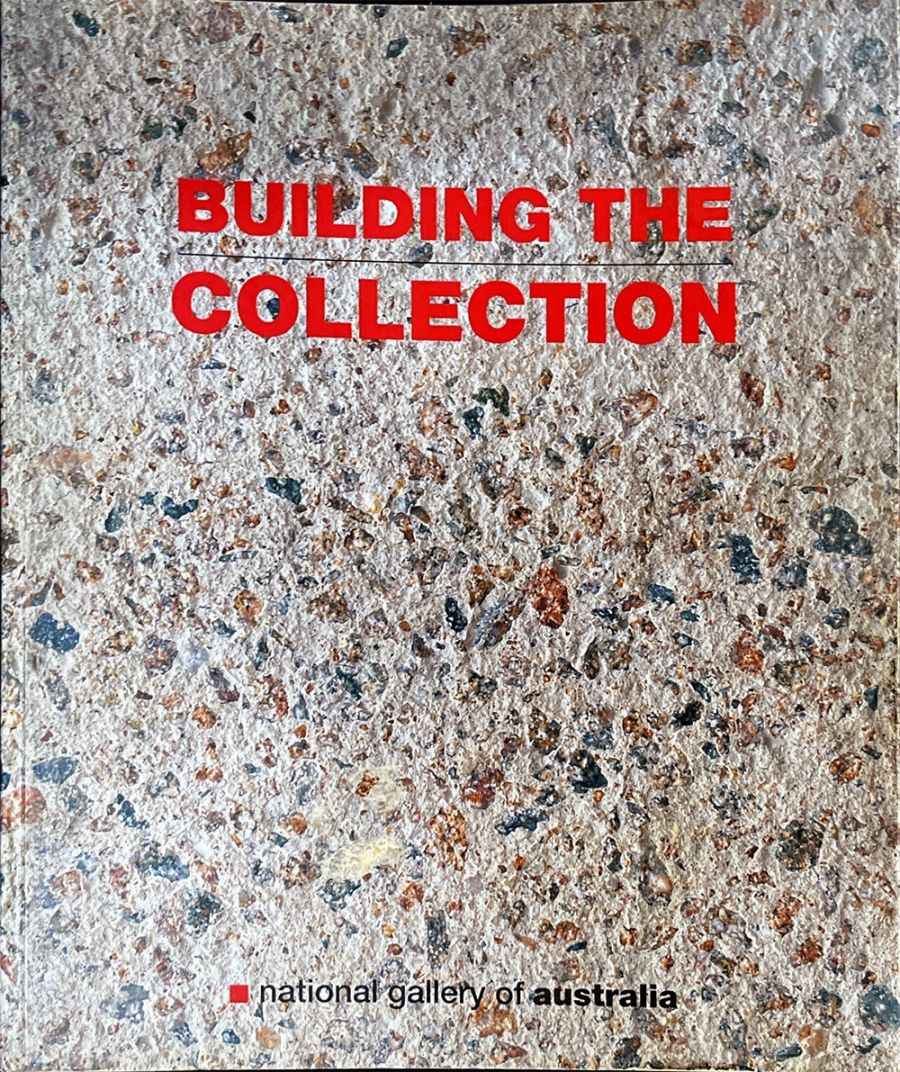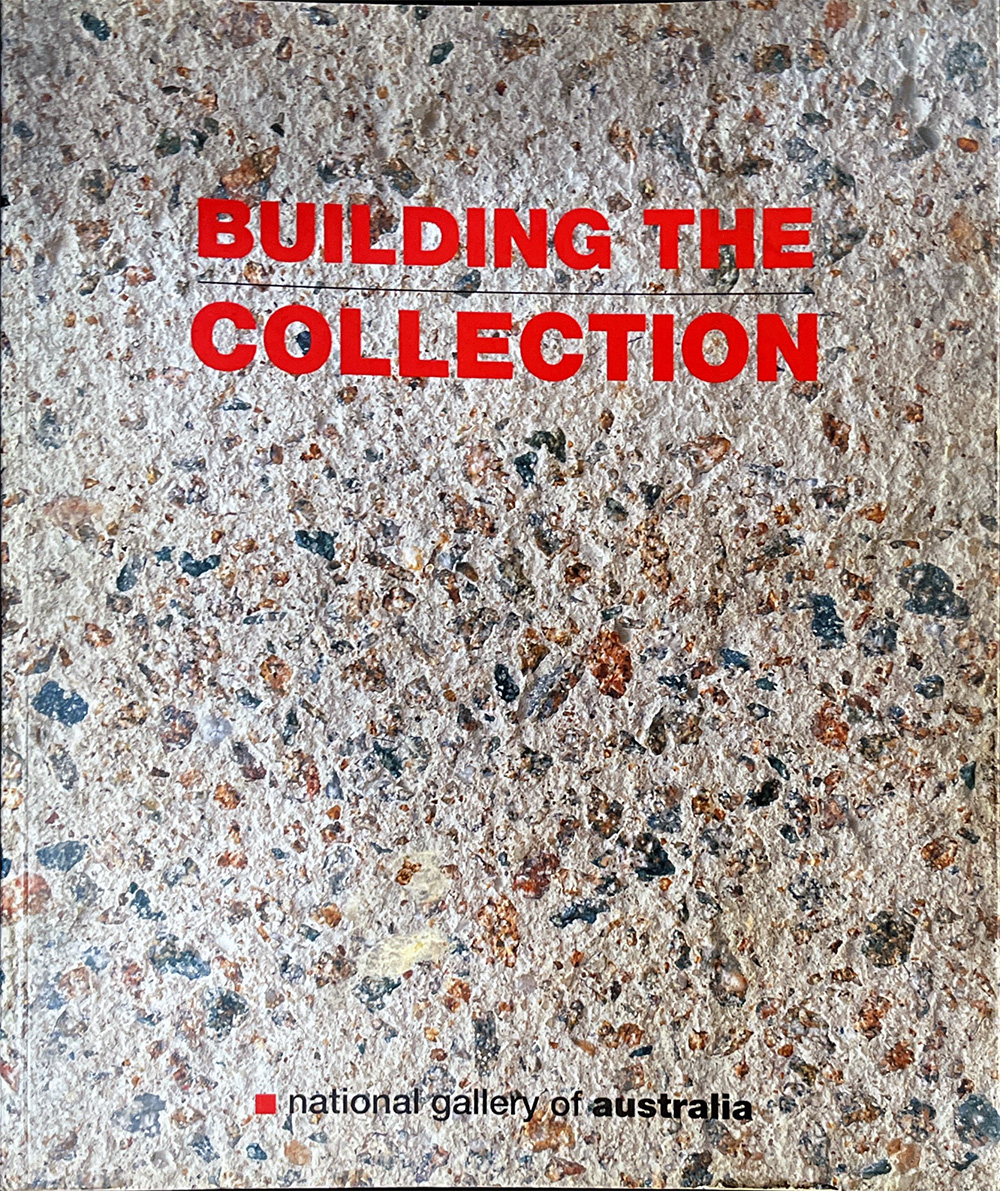
- Free Article: No
- Contents Category: Art
- Review Article: Yes
- Article Title: Mollison’s Creation
- Online Only: No
- Custom Highlight Text:
Robert Hughes, bemoaning the contents of the Art Gallery of New South Wales in 1959, cast an eye over its sandstone façade decorated in bronze letters with such august names as Rubens, Titian and Raphael, and quipped: ‘Never has so large a nut housed so inadequate a kernel.’ The National Gallery of Australia was in every respect the opposite story: its collection was a fat kernel in search of a shell. Until 1968 this collection, thought to comprise some 3000 works, was strung around Canberra offices and Australian embassies like so much washing on a line. The Commonwealth Art Advisory Board, which would soon be dismantled, had been buying energetically, if conservatively, for years. However, there was no catalogue, no conservator to care for them and no established policy for the collection.
- Book 1 Title: Building the Collection
- Book 1 Biblio: National Gallery of Australia, $69 pb, 416 pp
- Book 1 Cover Small (400 x 600):

- Book 1 Cover (800 x 1200):

Mollison’s ultimate appointment, after an exhausting game of international musical chairs, carries an interesting message. Today, directors are required to have a kite-tail of paper credentials after their names. Occasionally, the grander the CV, the graver the disappointment. Undaunted by criticism, undistracted by carping, Mollison vigorously pursued works of exceptional quality (both international and local) and in all media. By 1974 he had assembled a dazzling and representative collection of Australian and international art, which would be corralled in a shed at Fyshwick until the gallery’s opening.
Back to the shell. Col Madigan, having survived the shark-infested seas when the HMAS Armidale sank off the Timor coast in 1942, was well placed to keep afloat in the choppy and unpredictable waters of Canberra’s bureaucracy. He and his firm were chosen from twelve architectural firms that were ‘invited’ to submit a ‘concept’. Fourteen years later, Canberra had its imposing structure.
Recently, temperatures have been raised over plans to alter the main entrance of the building. It is, in the main, an unrewarding business to alter piecemeal a coherent statement of its time from the original architect. Maintenance aside, it could be argued that it should no more be interfered with than the paintings hanging on the wall.
The gallery opened in 1982, with much ceremony. There were customary effusions, visionary sermonising and, behind the scenes, exhaustion. The story of Blue Poles needs no retelling here. The publicity gave Canberra a tourist lure comparable to Sydney’s Opera House. Expatriate art dealer Max Hutchinson, who brokered the deal, once said, ‘They should give me a medal.’ In Hutchinson’s obituary, The New York Times made rather too much of the role of Blue Poles in the demise of the Whitlam government, stating that this expenditure, which required a vote by parliament, created a storm of protest and editorials in the Australian newspapers and ‘brought down the government’.
Building the Collection, a handsome and detailed volume, traces the National Gallery of Australia’s efflorescence through the forest of officialdom. Appropriately, it begins with an interview with Mollison and ends with a flourish from its current director, Brian Kennedy. In between, it proceeds as a kind of memoir, with a cast of characters – curators, council members and others – contributing a forensic cross-hatching of memories and events to its years of collecting, displaying and stoushing. There are some factual overlaps as various curators recall the glory days, but this is mere carping.
In a democratic impulse, as much attention is paid to the cast of characters (and they are legion) as it is to the actual works in all their diversity. Facts and figures are garnished with flesh and blood, essential for the visceral tale of a gallery. The chapters touch on most corners of the collection, although it is a pity to see Australian contemporary jewellery, with which the National Gallery is well endowed, overlooked. The years of director Betty Churcher’s tenure (1990–97) were, as she notes, mostly associated with significant international exhibitions. Their very presence was a testimony to the high regard in which the gallery was held in international circles, and for the quality of its permanent collection.
The book finishes on a candid note – or rather candid graph – which illustrates the number of gallery gifts and purchases between 1945 and 2002. In 1974, a year of great optimism in the cultural community, 9421 gifts rained down on a gallery that was yet to be built. And the gifts are still flowing. While the government has increased the gallery’s funding from $22.4 million in 1997–98 to $35.8 million in 2002–03, some members of the Gallery Council have dug deeply into their own pockets (this publication is coy about figures) to assist with the purchase of works Kennedy has set his excitable heart on.


Comments powered by CComment